This Millet Bread is the perfect gluten-free bread for sandwiches or breakfast toast with a delicious earthy millet flavor and you can whip it up in 10 minutes. It freezes well, toasts well, and can be used as an all-purpose gluten-free bread. Plus, millet bread is packed with fiber, and with 4 grams of protein per slice, it will keep you full for hours.
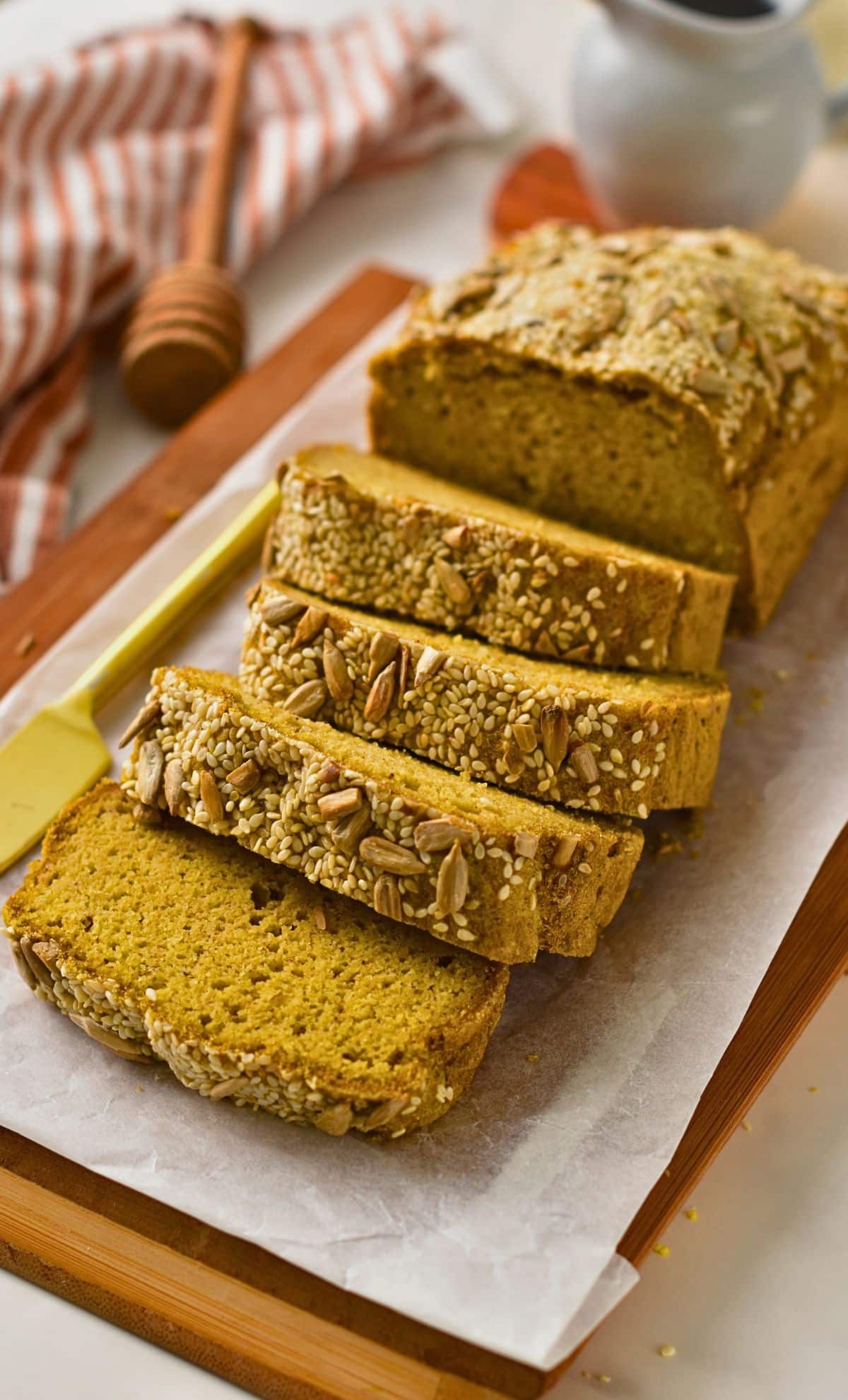
I love making my own bread, and after trying minimalistic recipes, like my 2-Ingredient Bread, classic recipes like my Vegan Irish Soda Bread, or simple recipes like Oat Flour Bread, I wanted to make a healthy, gluten-free bread with millet flour.
Millet flour is a great source of protein, fiber, vitamins, and minerals, so it’s an all-around great alternative to classic flour. This ancient grain was one of the very first grains cultivated and has been used ever since to make bread like this.
Ingredients and Substitutions
You don’t need many ingredients to make this simple bread. Here’s how to pick them.
- Millet Flour – Use ultra-fine, store-bought millet flour. Home-ground millet from hulled grains can result in coarse flour, leading to a gritty texture.
- Psyllium Husk – Acts as a binder, giving the dough elasticity. Whole psyllium husk works best. Do not use psyllium-based supplements like Metamucil—they contain fillers that will alter the texture and give an unappetizing purple hue.
- Light Olive Oil – A neutral oil like avocado or sunflower oil also works well. Avoid oils with strong flavors (like extra virgin olive oil) unless you want it to affect the taste.
- Lukewarm Water (98°F/37°C) – Warm water helps activate the psyllium for better dough structure. Be mindful not to use hot water, as it will make the bread dense by partially cooking the batter before baking.
- Seeds for Topping – Customize with pumpkin, sunflower, sesame, flaxseeds, or even poppy seeds.
How to Use Millet Bread
This healthy bread can be used for everything from breakfast to snack!
- For Breakfast: Toast with peanut butter, jam, or avocado slices.
- For Sandwiches: Layer with vegan cheese, fresh veggies, and hummus for a yummy lunch.
- As a Snack: Spread with butter and honey or chocolate hazelnut spread for a sweet treat.
- Crispy Option: Brush slices with olive oil and bake in the oven to make gluten-free crostini.
Carine’s Baking Tips
I have a few more tips for you that couldn’t fit in the recipe card.
- Don’t make your own millet flour for this bread recipe. A home blender will never create a consistent ultra-fine flour that makes the bread smooth, not gritty.
- Use the right psyllium husk. Powder is more absorbent than whole husk, which is what I am using here. If you use psyllium husk powder use 1/2 teaspoon less. Don’t use husk supplements. They are not made for baking.
- Don’t swap husk for anything else, this recipe won’t work without husk as a binder.
- Make sure you knead the dough until it forms a ball and the husk and millet have absorbed all the moisture. You may want to let the batter rest for 10 minutes and knead again. If your water isn’t warm enough, it takes a bit more time for the husk to do its job and bind the flour.
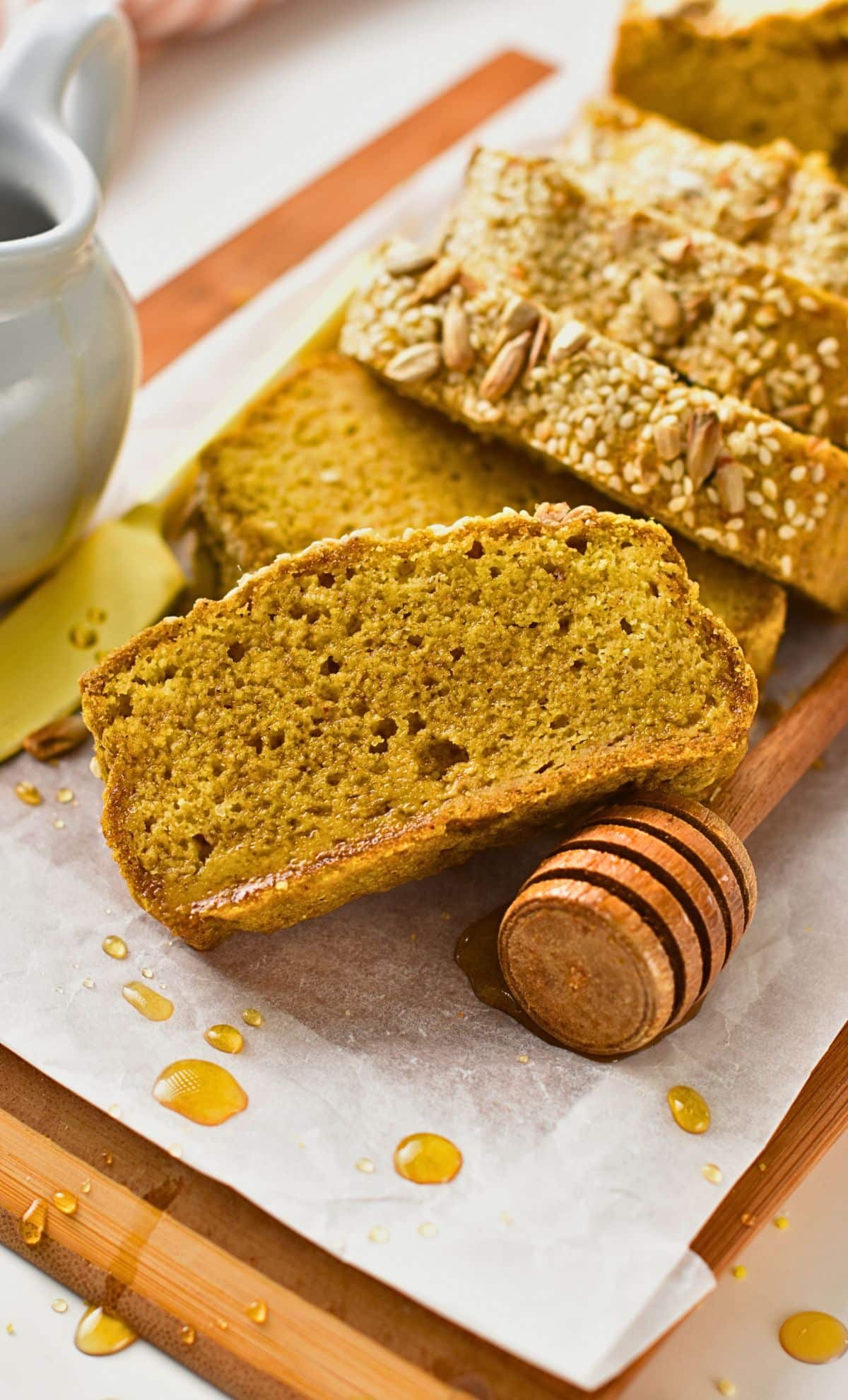
More Bread Recipes
Did You Like This Recipe?
Leave a comment below or head to our Facebook page for tips, our Instagram page for inspiration, our Pinterest for saving recipes, and Flipboard to get all the new ones!
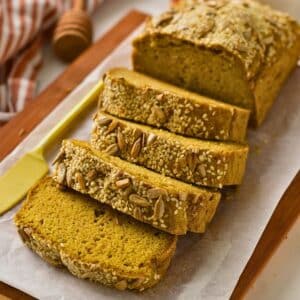
Millet Bread
Ingredients
- 1 ½ cups Millet Flour - (note 1)
- 3 tablespoons Psyllium Husk - (note 2)
- 2 tablespoons Light Olive Oil - (note 3)
- 2 cups Lukewarm Water - 37C/98F
- 2 teaspoons Baking Powder
- ½ teaspoon Salt
Toppings
- ⅓ cup Seeds of Choice - pumpkin, sesame, sunflower
Instructions
- Line a 9-inch loaf pan with lightly oiled parchment paper. Set aside.
- Preheat the oven to 400 °F (200 °C).
- In a mixing bowl, whisk dry ingredients: millet flour, psyllium husk, salt, and baking powder.
- Add oil and lukewarm water (bath temperature), stirring with a rubber spatula until the batter forms a ball that is a bit sticky and bouncy.
- Place the dough into the prepared pan and brush the top with a bit of water then sprinkle the seed mix on top.
- Bake the bread for 40-45 minutes at 400 °F (200 °C) until a pick inserted in the center of the bread comes out nice and clean.
- Let the bread cool on a cooling rack for at least 5 hours to overnight before slicing. If you slice it too early, it will pack and become dense.

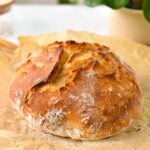
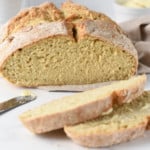
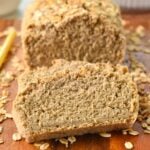



Have you tried this oil free?
Not yet, I think it will make the bread dry and crumbly tho
Hello!
I wonder if you use hotair/regular oven for this recipe? Bake it in the middle or down in the oven?
Regards from Maria (lovleyyoga)
I bake all my recipe on middle rack, regular oven. Enjoy the recipe.
My bread is much lighter in color than your picture. I had to use psyllium husk flakes could that be why? Thank you!
It can be, husk can do funny things like turn bread purple blue sometimes! I hope the texture and taste was lovely. Enjoy the recipe
Dear Carin,
Can i use your bread recipes in a breadmachine? Soon i will have one that’s why i am asking.
I am looking forward to see your answer! 🙂
Kind regards,
Sheryl
I don’t have a bread machine, but from what I know, any bread that is a standard loaf (no special shaping, like a baguette or focaccia) should work fine. So this recipe should be ok.
I say should because I cannot be totally certain until I’ve tried 🙂
Hi Carine,
This is my answer for Suma as I assume she is from India too. Closest to millet flour in India would be sorghum or jowar in Hindi.
I said sorghum as Carine says the Millet flour is light golden and sorghum would be closer to that colour.
Happy baking.
Thanks for your help I appreciate that so much!
I loved the texture but mine turned out so bitter that we could not eat it. probably the flour was bad.
It could well be. Millet is one of these flours that tends to sit on the shelves for a long time, both in the shops and at home!
My millet bread came out well… collapsed a
Little after taking from oven. BUT the bread is purple! Still tastes good!
This was surprisingly good
Hi Carine
what millet are you using as I have 3 different millet flour I have, like nachni, sorgam and bajro. Please advice which millet flour have you used.
could you use chia seeds instead of psysillium see#s?( also can you email he recipe to me. I can’t print from my phone and don’t want to lose this recipe. thanks nina
No you can’t it won’t work
I can’t help much in my country it is sold as millet flour, and it has a light golden color but no extra information about type of millet.